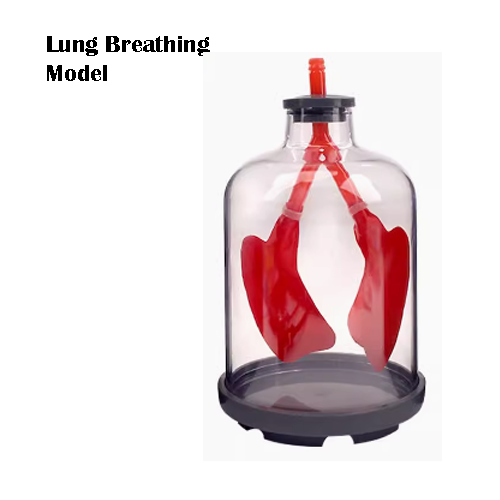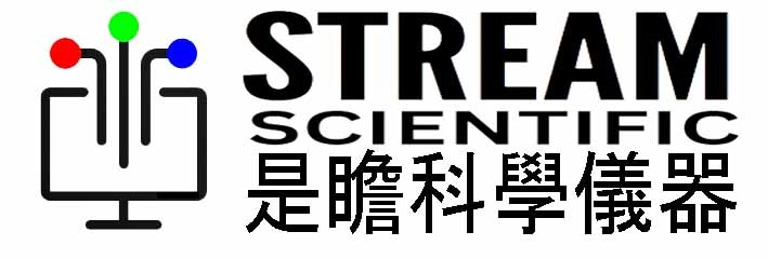
Student Lung Breathing Model
人體肺呼吸模型
HK$98.00
Human lung breathing model with balloon inside the bottle acts as a lung, the stretched rubber film acts as a diaphragm and the inside of the bottle acts as a chest cavity.
When you pull down on the ‘diaphragm’ balloon there is more space inside. This makes the air pressure inside the bottle lower than the air pressure outside the bottle. The lung balloon has ‘bottle’ air pressure on one side of the rubber and ‘room’ air pressure on the other side. Now the bottle air pressure is lower, so the room air pressure pushes harder and stretches the balloon and rushes into it. When the balloon gets bigger, there is less room in the bottle. So the bottle pressure increases. When the bottle pressure balances the air pressure in the room, the balloon stops inflating.
When you let go of the ‘diaphragm’ balloon, the volume inside the bottle gets smaller. This increases the air pressure inside the bottle so it’s higher than the air pressure outside the bottle. Air flows out of the ‘lung’ balloon through the straw.
When you breathe in, or inhale, your diaphragm contracts and makes the volume of your chest cavity bigger. Air from outside enters your airways and fills your lungs. When you breathe out, or exhale, your diaphragm relaxes and makes the volume of your chest cavity smaller. Air leaves your lungs and flows out of your airways.
The respiratory system includes the parts of the body that help you breathe. The circulatory system includes the parts that move blood around your body. Both are vital for survival. When we inhale, air containing oxygen moves into the lungs. The oxygen moves from the lungs into the circulatory system. The circulatory system transports the oxygen to the body’s cells.
人體肺呼吸模型,瓶內有氣球當肺,拉伸的橡膠膜當橫膈膜,瓶子內部作為胸腔。
當你向下拉「隔膜」氣球時,裡面就會有更多的空間。 這使得瓶內的氣壓低於瓶外的氣壓。 肺氣球橡膠一側具有“瓶”氣壓,另一側具有“室內”氣壓。 現在瓶子裡的氣壓較低,所以室內氣壓會更用力地推動氣球,並拉伸氣球並衝進去。 當氣球變大時,瓶子裡的空間就會減少。 因此瓶內壓力增加。 當瓶子的壓力與房間內的氣壓平衡時,氣球停止充氣。
當你放開「隔膜」氣球時,瓶子內的體積就會變小。 這會增加瓶子內的氣壓,使其高於瓶子外的氣壓。 空氣經由吸管從「肺」氣球流出。
當你吸氣時,你的橫膈膜會收縮,使胸腔的體積變大。 外界的空氣進入您的呼吸道並充滿您的肺部。 當你呼氣或呼氣時,你的橫膈膜放鬆,使胸腔的體積變小。 空氣離開肺部並流出呼吸道。
呼吸系統包括幫助您呼吸的身體部位。 循環系統包括使血液在全身流動的部分。 兩者對於生存都至關重要。 當我們吸氣時,含有氧氣的空氣進入肺部。 氧氣從肺部進入循環系統。 循環系統將氧氣輸送到身體的細胞。
我們的細胞利用氧氣將食物中的化學能轉化為為細胞活動提供動力的分子。 二氧化碳是過程的廢物。 二氧化碳通過循環系統到達肺部,然後被呼出。

